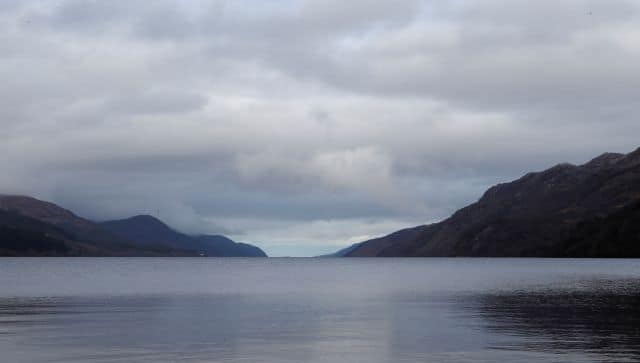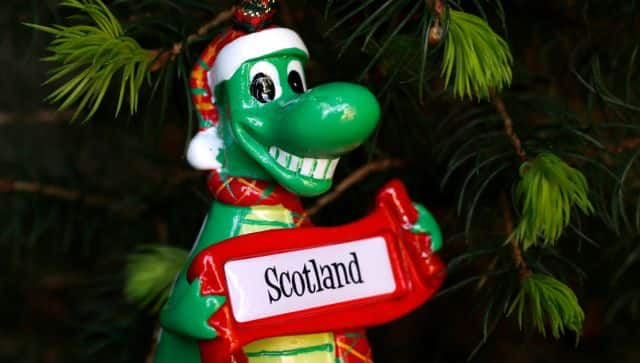‘Monster hunters’ and amateur sleuths are gathering in the United Kingdom’s Scottish Highlands this weekend in search of the mythical Loch Ness monster, affectionately named Nessie. As per the organisers Loch Ness Centre, it is the biggest search for the legendary creature in over 50 years. Hundreds of volunteers from across the globe will participate in person and online for the search scheduled on 26 and 27 August. “The volunteers are going to be watching the water,” Paul Nixon, manager of Scotland’s Loch Ness Centre, told CNN. “If they spot something, hopefully, they will film it and then submit it to our online portal.” What will the hunt entail? What is the history of this mysterious creature? Why are so many people still fascinated with Nessie? Let’s take a closer look. Finding Nessie According to the Loch Ness Centre, the largest “surface watch” for Nessie since the 1970s will include modern technology, such as thermal drones and a hydrophone, to “search the waters (of Loch Ness) in a way that has never been done before”, reported Associated Press (AP). While drones with infrared cameras will fly over the lake, a hydrophone will detect acoustic signals underwater. At 36 kilometres in length and over 780 feet deep, Loch Ness is Great Britain’s largest lake by volume and second-largest by surface area, noted Encyclopedia Britannica. The Loch Ness Centre has collaborated with Loch Ness Exploration (LNE), an independent and voluntary research team, for the event, as per CNN. “What’s different about our search this time is that obviously our volunteers will be armed with mobile phones and will be able to capture any movement more accurately and more regularly,” manager Nixon told CNN. [caption id=“attachment_13027512” align=“alignnone” width=“640”] A view of Loch Ness in Britain’s Scotland captured in 2019. Reuters File Photo[/caption] The centre, which was recently renovated, is located at the old Drumnadrochit hotel. As per The Guardian, LNE’s Alan McKenna, who will brief volunteers each morning on what to look out for and how to record findings, said: “It’s always been our goal to record, study and analyse all manner of natural behaviour and phenomena that may be more challenging to explain.” “It’s our hope to inspire a new generation of Loch Ness enthusiasts and by joining this large-scale surface watch, you’ll have a real opportunity to personally contribute towards this fascinating mystery that has captivated so many people from around the world”. Director of Cobbs Group director, Fraser Campbell, which owns the Drumnadrochit hotel, told the UK daily that the renewed interest in the Loch Ness monster had led to “unbelievable” bookings across this summer season. Legend of the Loch Ness monster The earliest mention of the monster can be traced back to Irish monk Saint Columba, who is believed to have encountered a “water beast” in 565 AD in the River Ness, which flows from the loch, reported The Guardian. The biography of Saint Columba, written by Saint Adamnan, says that the monk used the “power of god” to cast away the monster in the lake, according to Time magazine.
A view of Loch Ness in Britain’s Scotland captured in 2019. Reuters File Photo[/caption] The centre, which was recently renovated, is located at the old Drumnadrochit hotel. As per The Guardian, LNE’s Alan McKenna, who will brief volunteers each morning on what to look out for and how to record findings, said: “It’s always been our goal to record, study and analyse all manner of natural behaviour and phenomena that may be more challenging to explain.” “It’s our hope to inspire a new generation of Loch Ness enthusiasts and by joining this large-scale surface watch, you’ll have a real opportunity to personally contribute towards this fascinating mystery that has captivated so many people from around the world”. Director of Cobbs Group director, Fraser Campbell, which owns the Drumnadrochit hotel, told the UK daily that the renewed interest in the Loch Ness monster had led to “unbelievable” bookings across this summer season. Legend of the Loch Ness monster The earliest mention of the monster can be traced back to Irish monk Saint Columba, who is believed to have encountered a “water beast” in 565 AD in the River Ness, which flows from the loch, reported The Guardian. The biography of Saint Columba, written by Saint Adamnan, says that the monk used the “power of god” to cast away the monster in the lake, according to Time magazine.
However, it was not until 1933 that the Loch Ness monster gained worldwide attention.
At the time, a local newspaper, the Inverness Courier, reported that Aldie Mackay, manager of the Drumnadrochit hotel, witnessed a “water beast” in Loch Ness. Later in the same year, George Spicer told Inverness Courier of seeing “a most extraordinary form of animal”, which was six- to eight-foot-long with a long neck, cross the road while he was driving near Loch Ness, The Washington Post reported. “I saw the nearest approach to a dragon or prehistoric animal that I have ever seen in my life,” he wrote in a letter published by the Courier. Spicer’s story “caught the media’s imagination, and the Loch Ness monster was born,” Gary Campbell, of Inverness, who runs the Official Loch Ness Monster Sightings Register, told the American newspaper. As per Time, this triggered an obsession with the creature in Britain and beyond. In November 1933, Hugh Gray told Scottish Daily Record that when he was walking along Loch Ness, he noticed “an object of considerable dimensions” coming two or three feet out of the water near him. The photo snapped by Gray of what appears to be an “animallike tail” in water added fuel to the frenzy for this legendary creature, The Washington Post reported. “The photo kicked off the modern era of [Nessie] hunting. Up until then, it was just a local mystery,” Roland Watson, the author of several books about the
Loch Ness monster
, said, as per the American daily. “Ninety years on, Gray’s photo is still seen as one of the best.” In 1934, English physician Robert Wilson took a picture, famous as the “surgeon’s photograph”, which shows a long-necked creature poking its slender neck out of the water. Although this photo later turned out to be a hoax, it remains imprinted into the minds of the people even today. This mysterious creature has been referred to as ‘Nessie’ since the 1940s, The Guardian noted. Loch Ness Investigation Bureau, which was set up in the 1960s, undertook the biggest search of the loch in 1972, as per the UK daily’s report. Inverness’ register has recordings of 1,148 sightings of an unidentified creature in the lake and on land, as per The Washington Post. What’s behind the obsession? From mermaids, the Phoenix, dragons, and unicorns to vampires and werewolves, mythical creatures and fabled beasts have continued to capture the public imagination. As per The Conversation, there are more than 85 theories on what the Loch Ness monster is, ranging from plant debris, boat wakes to killer whales and the ocean sunfish. Speaking to The i newspaper in 2019, Philip Hoare – author of Leviathan, said that the fascination with fantastic beasts could be linked to how “we’ve separated the way of looking at the world”. [caption id=“attachment_13027522” align=“alignnone” width=“640”] A Christmas figurine of Nessie at a souvenir shop in Glasgow, Scotland in 2014. Reuters File Photo[/caption] “Since the mid-19th century, there have been two notions of looking at the world – mythically and rationally – and I think we’re still living in fall-out from that,” he explained. “We don’t want to believe we’ve discovered something, because it would be the end of poetry and imagination. I don’t think what any scientist says is going to dissuade the idea of monsters. They are in the corners of our existence and I don’t want to be disabused of those notions.” Noting that the Loch Ness monster has several identities, Charles Paxton, a research fellow at the University of St Andrews, wrote for The Conversation last year that “Nessie is a function of human psychology rather than nature. And perhaps it is human psychology rather than nature that has sustained the idea of Nessie since the 1930s.” With inputs from agencies
A Christmas figurine of Nessie at a souvenir shop in Glasgow, Scotland in 2014. Reuters File Photo[/caption] “Since the mid-19th century, there have been two notions of looking at the world – mythically and rationally – and I think we’re still living in fall-out from that,” he explained. “We don’t want to believe we’ve discovered something, because it would be the end of poetry and imagination. I don’t think what any scientist says is going to dissuade the idea of monsters. They are in the corners of our existence and I don’t want to be disabused of those notions.” Noting that the Loch Ness monster has several identities, Charles Paxton, a research fellow at the University of St Andrews, wrote for The Conversation last year that “Nessie is a function of human psychology rather than nature. And perhaps it is human psychology rather than nature that has sustained the idea of Nessie since the 1930s.” With inputs from agencies
)